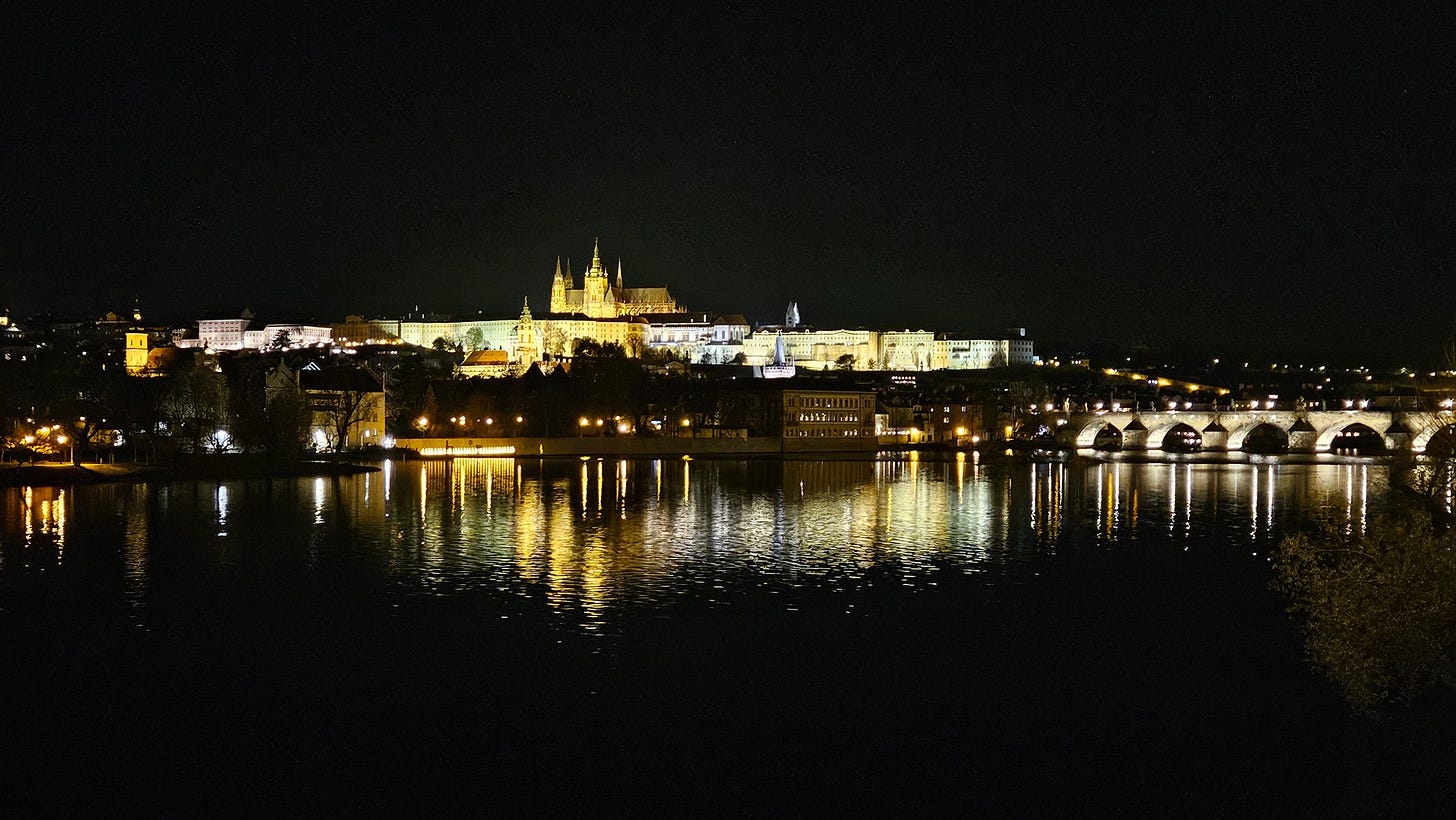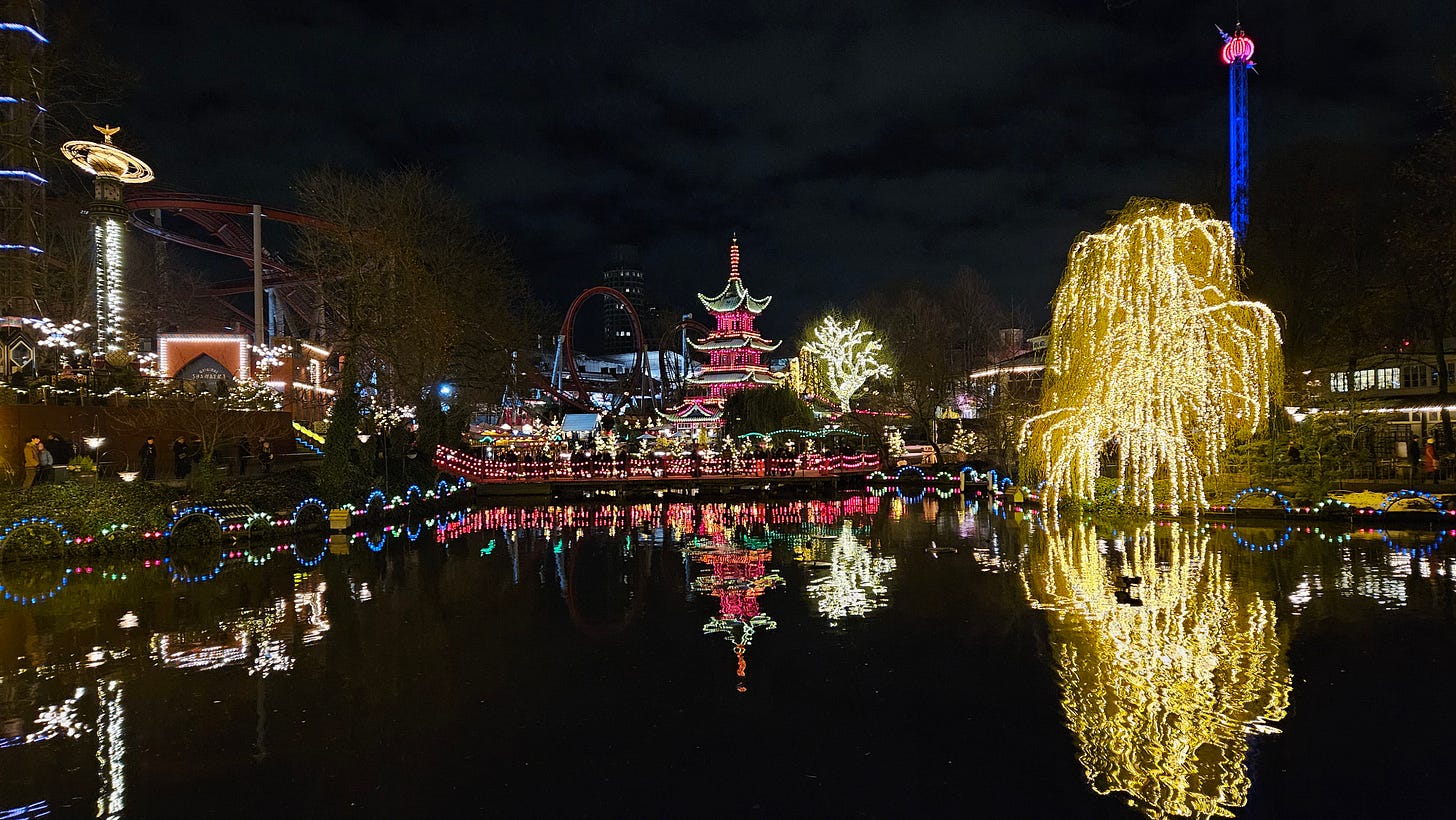Notes on Prague and Copenhagen
A week on the road
Time for a travel break. This fall I was asked by my employer, the University of New Haven, to visit Prague on a study abroad accreditation visit for Verto Education. Verto is an innovative study abroad company that runs programs for Americans in several European cities as well as Buenos Aires. Rather than taking students who are already enrolled at American universities for a semester or year, Verto students begin their freshman year abroad as part of a Verto program. The organization has signed agreements with dozens of universities, some of them relatively selective, that guarantee admission to students after they complete a semester or year, provided they meet certain academic requirements. Other schools, including Boston University, will tell students at the top of their waitlist that they can spend their freshman fall semester in a Verto program and then enroll in the spring back in the United States. Credits transfer because all Verto classes are being accredited by the University of New Haven. Technically speaking, Verto classes are University of New Haven students, even though they never set foot in Connecticut.
At the risk of sounding like a shill, I thought this was a fantastic idea. Selective universities have always struggled with “melt” over the academic year. Some fresh-faced high schoolers who arrive every fall are not ready for college and will drop out during their freshman year. This, along with students graduating a semester late, means every university has to deal with more students in the fall semesters than in the spring. By sending waitlisted students abroad for their fall semester, American universities can balance that unevenness without lowering their academic standards. My biggest surprise was that there are enough American parents willing to agree to sending their recent high school graduate abroad for a semester or year rather than a stateside university.
Anyway, being asked to spend a week in Prague was wonderful. I studied abroad there myself, and it’s one of my favorite European cities. After spending four nights in Prague, I took advantage of SAS’s free stopover program and spent 24 hours in Copenhagen, a city (and country) I had never visited. Here are some of my thoughts on both cities. The first I know better than any foreign city in the world, the second for only a day.
Prague
I was surprised by how international Prague now feels. It used to be almost entirely Czech food. Other than Vietnamese restaurants, a legacy of a large immigrant community from communist days, if you wanted non-Czech food you were generally limited to a few uninspired Italian restaurants or going to Burger King. Today, Prague’s dining scene reflects that of many other capital cities. Even outside the city center, you can find Thai restaurants, sushi spots, and hipster cafes. I suppose one could mourn the loss of a city that used to be Czech through and through, but after four days of eating meat and potatoes, I needed some fresh vegetables. One thing that hasn’t changed is the customer service; it is still brusque to the point of rudeness, which always comes as a shock to American diners. Apparently Verto Education has included this in their orientation for American students - the waiter isn’t mad at you, he’s like that to everyone.
On a similar note, English proficiency has risen dramatically. English has been part of the standard Czech school curriculum for decades, but it took a while to take hold. When I studied abroad I was surprised to routinely run into college students who didn’t speak any English. Now that most Czech parents were taught English in schools, combined with the ever-present American-led social media apps, young people at least have the fundamentals down. This used to be hit-or-miss outside of tourist attractions and restaurants in the center.
Prague is one of my top five European cities. Since everyone thinks the city they studied abroad in is one of the best, I’ve always wondered how I’d rank Prague if I never lived there. Having now traveled almost the entire continent, I can confirm: Prague is the best. One of the world’s great cities. It may not have the art of Florence or the set pieces of Paris, but no other large city in the world matches its sense of medieval mystery. The black cobblestones, eerie streetlights, and winding streets make Prague exceptional. You never know what you’re going to find around any corner. A few other cities, notably Ghent, come close, but none can quite match the Prague mystique.
That mysteriousness is at its best when the weather is subpar. Cities like Rome or Paris might be in top form on a nice summer’s day, but Prague is a city to see in the cooler months. All week I wandered Prague in near-freezing weather and a light mist. That might sound terrible, but it’s when Prague’s atmosphere is turned up to 11. When I studied abroad, I would take the metro into the old town during rainy evenings and explore. Walking across the Charles Bridge on a cool, rainy night, with Prague Castle illuminated in front of you and Tyn Church behind, is a top European experience.
Copenhagen
Copenhagen had been on my list for many years to visit, but I’d avoided it because of the sky-high prices. Fortunately, my flight from JFK to Prague took me through the Danish capital, and SAS has a free stopover program. It was the perfect opportunity to spend 24 hours seeing as much of the city as possible.
As far as prices go, meh. Some things were more expensive than the US. Alcohol is famously expensive, with $11 beers the norm. A day of paying entry fees could add up quickly - $22 to spend an hour in the underwhelming Rosenborg Castle was a bit high, although getting to see the crown jewels of Denmark was cool. In other ways Copenhagen was cheaper than America. I had a functional but clean and well-reviewed hotel in the heart of Nyhavn on a Friday night. It cost $184 including taxes and fees. Good luck finding that anywhere in the States. Mains at good restaurants cost around $30. A two-hour metro pass was $5. Much more expensive than Austria or even France, but as prices have exploded in America, it’s made Copenhagen relatively cheaper. All-in-all, price-wise, Copenhagen is on par with most US coastal destinations.
I found most of my expectations about Copenhagen to be accurate. There are block after block of beautiful residential buildings. The government buildings are grandiose. The canals, charming. Despite the cold weather, it was great seeing most of the city transit on bicycle. Businesspeople, tourists, and often parents with children cycle around the city with ease. The array of child attachment contraptions people had attached to their bikes was fascinating. Some were just the standard jump seat behind the pedaler. Others were fully enclosed carts that somehow attached to the front of the bike and could hold two children.
One surprise was the cleanliness, for which Copenhagen is famous. I didn’t find it to be a dirty city, and perhaps this had to do with it being a Friday night/Saturday morning, but there was more trash around than I expected. People leave empty beer bottles, cups, food wrappers, all over the place. I saw more empty packs of cigarettes lying on the ground in a few hours than you would see in a month in the States. I know that a Saturday morning is not the best time to judge the dirtiness of a city; still, it reminded me for the umpteenth time that American cities are some of the cleanest in the world.
Add a visit to Copenhagen during the Christmas season to your travel list. Yes it’s cold. Yes, it’s dark. But it generally isn’t too cold - the average high in December is above freezing. And the darkness makes Copenhagen come alive. Outdoor markets dot the city. Wooden stalls are filled with hawkers selling roasted almonds, Glögg (the Danish version of mulled wine), sausages, and Christmas kitsch. Several had ice skating rinks. Strøget, the pedestrian-only shopping street, was decked out to the nines.
This went into overdrive at Tivoli Gardens. Tivoli is one of the oldest operating amusement parks in the world. It has an adorable combination of old and new rides, including a (very) small rollercoaster and drop tower. Open mainly during the summer months, it closes every fall to decorate and reopens for about eight weeks every Christmas season. This, more than any place I’ve ever been, is what Christmas is all about. Thousands of Danes of all ages strolled through the park. Tens of thousands of lights were strung up all over the park. Trees were decorated with ornaments. The staff was dressed like conductors on the Polar Express. Yes, the entry fee was a bit steep at $33, not including rides. Still, it was magnificent. It should be part of every Christmas lover’s bucket list. I’m not a big Christmas person. It’s a fine holiday, but I generally don’t feel “Christmas magic”. In Tivoli I did.



